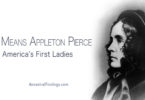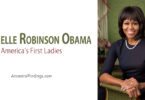Born Claudia Alta Taylor on December 22, 1912, in Karnack, Texas, our future thirty-sixth First Lady gained the nickname “Lady Bird” at a young age, and the nickname would become what she was known as publicly for the rest of her life. The nickname came from her childhood nursemaid, who said of her when she was an infant that she was as “pretty as a ladybird.” Her given first name of Claudia was in honor of her mother’s brother, Claud.
Even her father and siblings called her “Lady,” and her future husband called her “Bird.” She also used “Bird” as the name on her marriage certificate, instead of Claudia.
Lady Bird grew up in an antebellum plantation house that her father purchased shortly before she was born. She was the daughter of Thomas Jefferson Taylor and Minnie Lee Pattillo. Her father was the son of a sharecropper and a native of Alabama. However, he worked his way up from poverty to become a wealthy businessperson, owning 15,000 acres of cotton, and two general stores.
Her mother was also a native of Alabama; while she adored opera, she was often in poor physical health, and her emotional health was not very strong most of the time, either. She was considered eccentric and came from an old, aristocratic, and wealthy Alabama family. She enjoyed wearing long white dresses with heavy veils, and who caused local scandal by inviting African-Americans into her home to entertain them, at a time when that was simply not done in the American south. In addition, Minnie began writing a book about the religious practices of African-Americans in the south, called “Bio Baptism.” She never finished it, but merely beginning it was considered scandalous. Minnie died when Lady Bird was five years old, due to the complications of a miscarriage she suffered after falling down a flight of stairs.
After the death of her mother, Lady Bird (who also had two elder brothers) was mostly raised by her aunt, Effie Pattillo, her mother’s sister. Effie moved to Karnack after Minnie died, and Lady Bird visited her mother’s relatives in Alabama every summer until she grew up.
She was an excellent student and graduated third in her class from high school. She actually had to drive to a different town to attend high school, as Karnack did not have one, and her father bought Lady Bird her own car for this. She actually had the grades to be valedictorian, but purposefully let her grades slip to third in her class so she would not have to give a valedictorian or salutatorian speech because she was shy. She graduated from St. Mary’s Episcopal College in 1930. She later returned to school at the University of Texas and earned a BA in History with honors in 1933, and a second BA degree in Journalism cum laude in 1934.
A friend from the University of Texas introduced her to her future husband, Lyndon Baines Johnson, who was then a twenty-six-year-old Congressional aid with political ambitions. The attraction between the two was immediate, so much so that Lyndon proposed to Lady Bird on their first date. She did not want to rush into things, but Lyndon did not want to wait to marry her. Ten weeks later, she finally gave in and accepted his proposal. They married on November 17, 1934, in San Antonio, Texas.
Starting a family was a challenge for them at first, with Lady Bird suffering three miscarriages early on. They finally had two healthy daughters together, Lynda and Luci. Everyone in their little family shared the same initials… LBJ. Lynda and Luci spent their teen years in the White House, and under sharp media scrutiny as they grew into women.
Lady Bird received a substantial inheritance from her father and spent it on excellent investments, such as radio stations and banks. Eventually, she turned her investment of $41,000 into more than $150 million and was the first wife of a US President to become a millionaire in her own right before her husband was elected to office.
As First Lady, Lady Bird began a beautification project for the nation’s capital, wanting to improve it for both residents and tourists. This involved planting millions of flowers in the city. She was quoted as saying, “Where flowers bloom, so does hope.”
Lady Bird enjoyed being First Lady, but was eager for her husband to leave office, because she was concerned being President was bad for his health. Partially because of her influence, and partially because of party politics, Lyndon declined to accept a nomination for a second term as President. This was a legitimate concern of Lady Bird’s, as Lyndon died only a few years after leaving office, after having a heart attack unexpectedly. Lady Bird, being entitled to Secret Service protection as a presidential widow who had not remarried, maintained this protection for forty-four years, longer than any other First Lady or President in history so far.
She died of old age at age 94 on July 11, 2007. At the time, she had seven grandchildren and ten great-grandchildren. Three weeks before she died, she gave $300,000 to her church, St. Barnabas Episcopal Church in Fredericksburg, TX, to pay off its mortgage. Lady Bird was the 1stFirst Lady to die in the twenty-first century. She also became the third longest-living First Lady, behind only Bess Truman and Nancy Reagan.
Her funeral was a public event, with the public being invited to line the route in downtown Austin, Texas as her processional went by. Her pallbearers, unlike other First Ladies, were members of the military. The burial ceremony was private, taking place at the Johnson family cemetery in Stonewall, Texas. She was placed next to her husband, who pre-deceased her by thirty-four years.
Today, Lady Bird Johnson is remembered as a lady of class, elegance, distinction, and kindness, and is one of the most recognizable First Ladies of the twentieth century.






